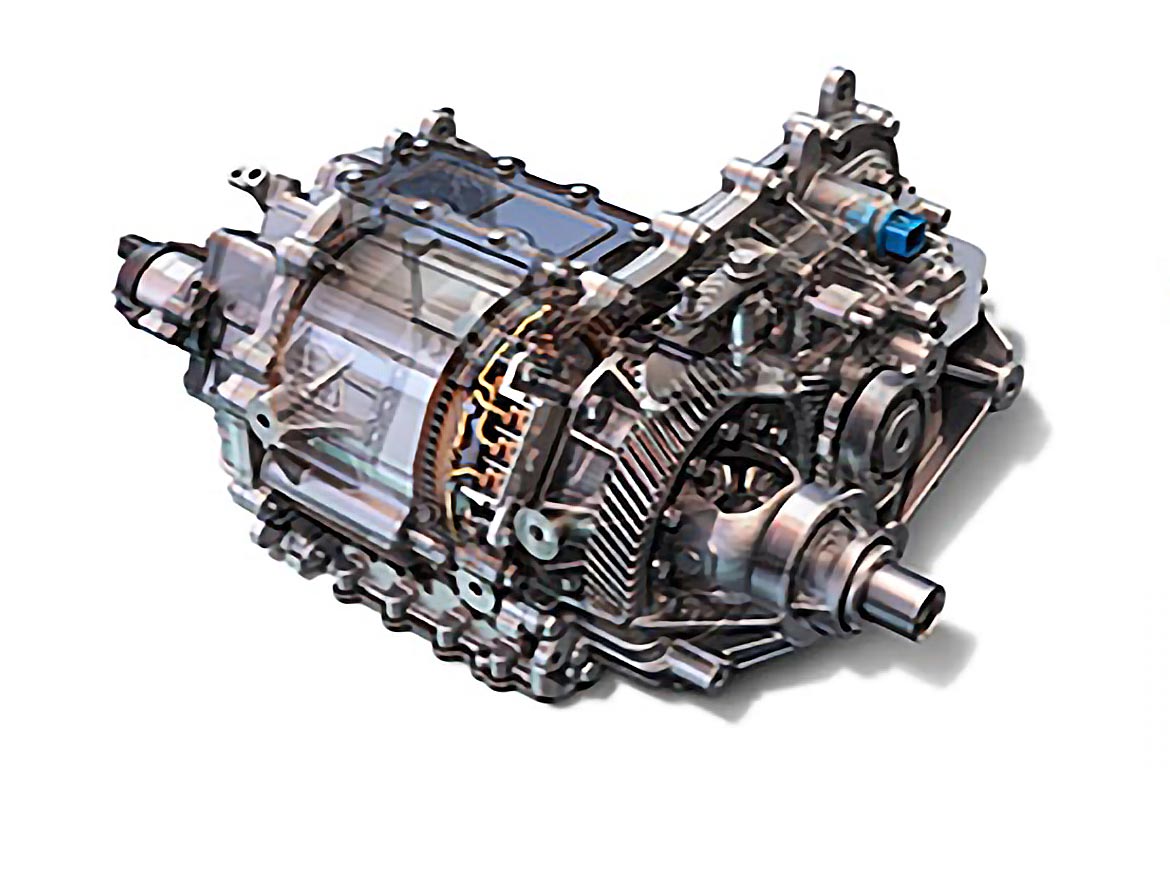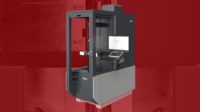The performance of an electric vehicle power unit is directly connected with critical tolerances. Tolerances drive opportunities for performance enhancement with cost reduction. The tests normally used to determine and validate tolerances are both expensive and time consuming with prototype parts. By replacing the initial tests with digital twin simulations, results can be obtained quickly, and at a much lower cost. This article discusses one of these tests and the results.

How Digital Twins Can Improve Testing on Electric Vehicles
 By replacing the initial tests with digital twin simulations, results can be obtained quickly, and at a much lower cost. Tom Oetjens of Dimensional Control Systems describes the advantages of simulated testing with digital twin.
By replacing the initial tests with digital twin simulations, results can be obtained quickly, and at a much lower cost. Tom Oetjens of Dimensional Control Systems describes the advantages of simulated testing with digital twin.
Listen to more Quality podcasts.
This upfront simulation method illustrates the use of digital technology to create a parametric family of designs with statistical tolerances as the parameter. The result: a digital validation of the design variation to reduce prototype builds or solve build issues while increasing innovation.
Once an adjustable statistical tolerance has been established, the tolerances can be split into the individual components. For example, in the concept design phase, the bearing may represent the combination of the gear grade, bearing specifications, and the housing specifications. Dividing the tolerance up using statistical cost analysis can balance the design tolerances at the lowest cost.
Gear micro geometry in the form of gear crowning, gear backlash, or tooth clearance is another example of the method. Adjusting the tolerance as a parameter provides the geometric information to ensure the gear system backlash meets the required specifications.

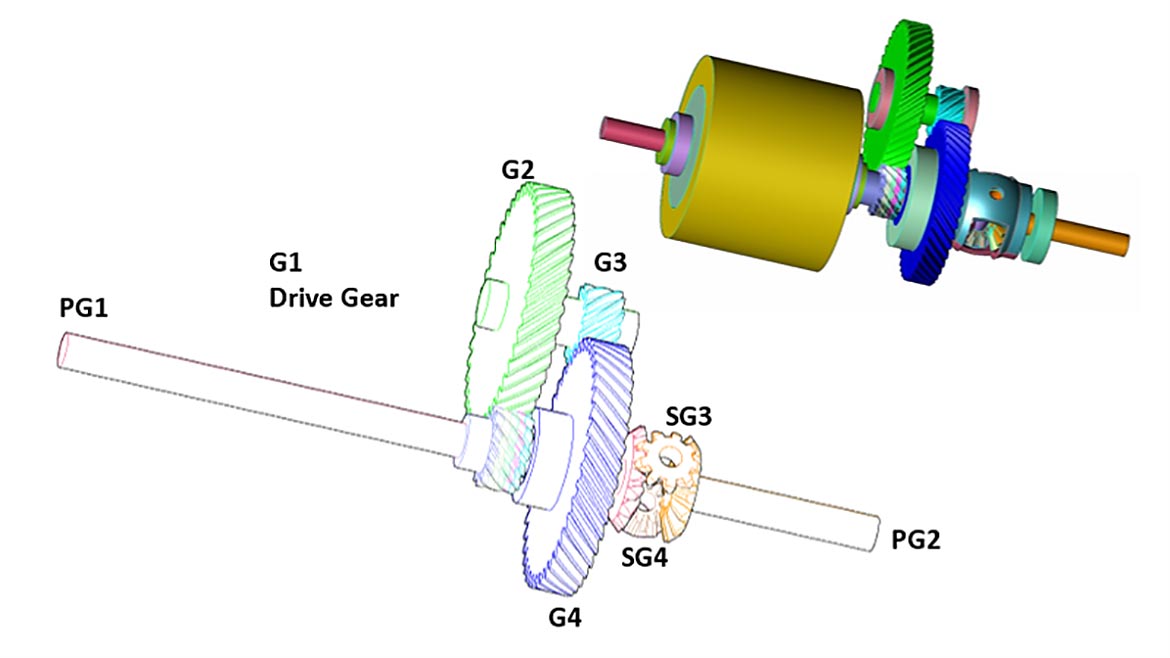
For this study, tolerance analysis software integrated into CAD software was used to simulate both part and process variation. This enables engineers to analyze their manufacturing process and determine how it affects both the assembly and final product functionality. The part tolerances, assembly process, and product measures are functionally transformed into the ability to predict and fix quality issues before the builds of concept, prototype, pre-production, and production.
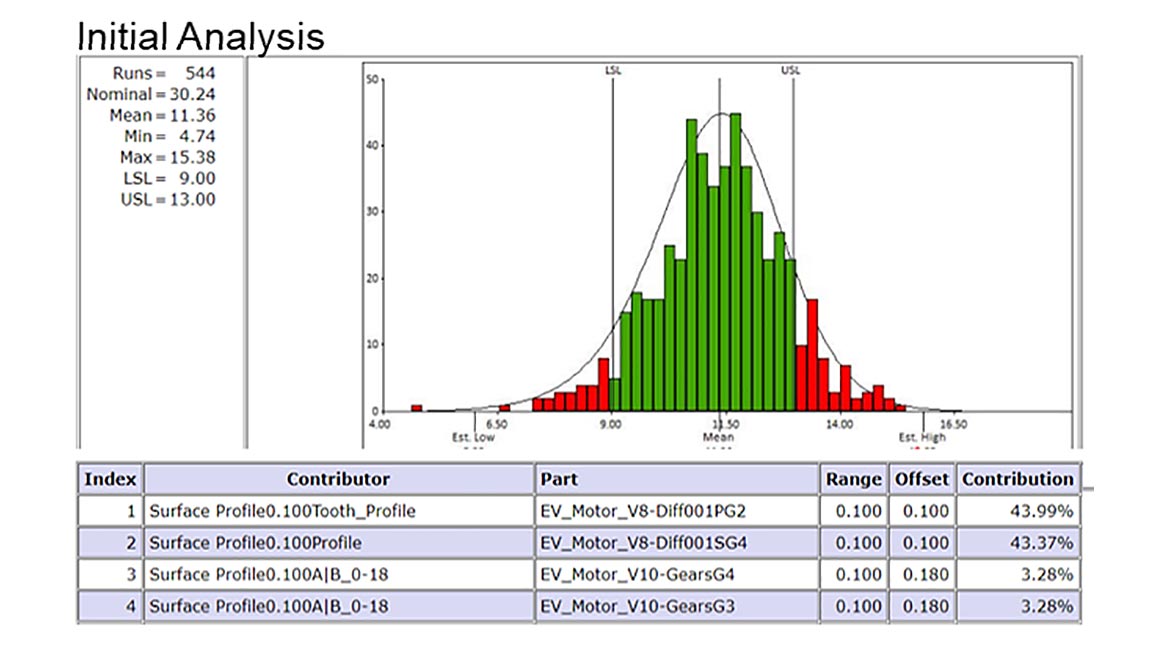
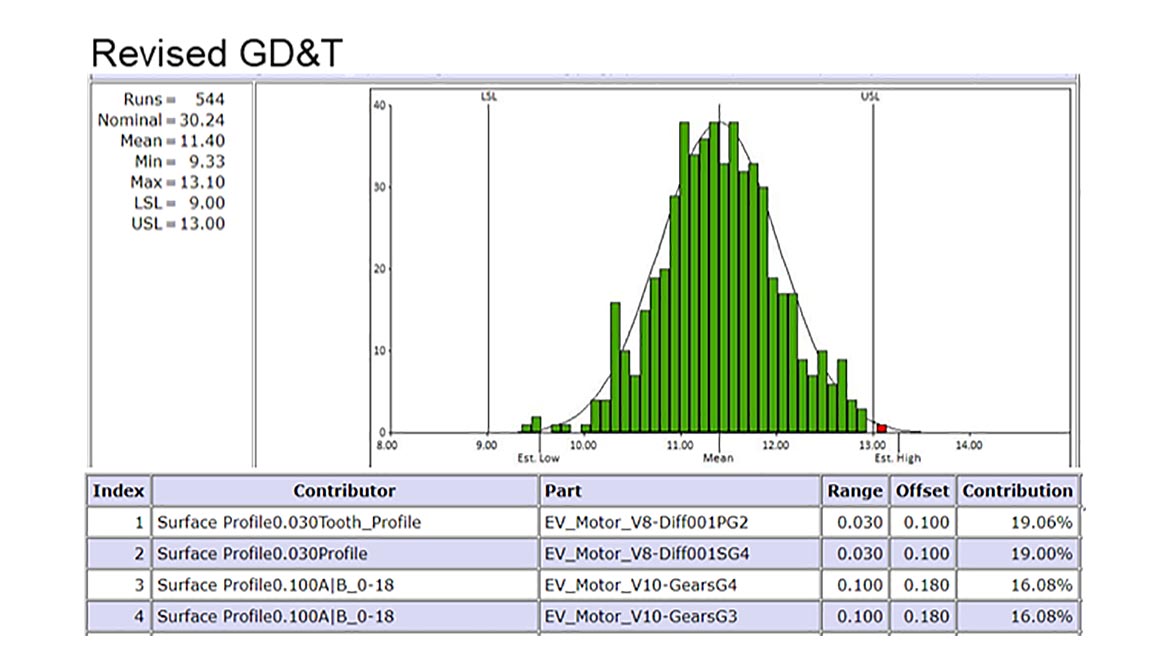
Dimensional analysis of gear trains includes a high accuracy tooth microgeometry contact mechanism. The analysis also includes complex gear and mechanism dynamics with bearings, shims, and housing systems.
The simulation output includes contributors, the sources and primary cause of variation for a measurement. The contributor list includes a number of statistics to show the influence of each contributor, which can be an assembly process, tolerance, or other input. These are used to validate that the results are within the measurements upper and lower specification limits.
The contributors with the higher percentage of contribution are candidates for tighter tolerances to meet the specification. The percentage of contribution estimated by the listed contribution percentage can be changed by adjusting the tolerance and running the model with the change.
The angle backlash is one simulated test that can be done with this digital twin model. The electric vehicle power unit angle backlash is the change in angle of the rotor while rotating back and forth with the wheels locked. In the illustration, the angle backlash, the wheel rotation gears, PG1 and PG2 are fixed. G2 and G3 are connected and rotate together in a gear stage. G4 Rotates with SG3 and SG4 in the connected differential, along the same axis as PG1. The gear ratio for G1 to PG1 and PG2 is 12:1.
The 12:1 gear ratio from PG2 to G1 is the source of the dominant contribution of the PG2 and SG4 Gears, 44% and 43%. This indicates that to reduce the system angle backlash, the backlash between these two gears should be reduced.
This reduction is accomplished by reducing the tolerance range of the tooth microgeometry from 0.1mm to 0.03 mm. This statistical adjustment in the digital twin is parametric.
The contributions of the PG2 and SG4 gears have been reduced to 19% and 19%, down from 44% and 43% respectively. In addition, the system axial backlash range has been reduced to 3.77ᵒ, down from 10.64ᵒ.
The overall goal of this analysis is to reduce lead and launch time by eliminating or minimizing the sources of variation. By determining the corrective action in the simulation, users can find opportunities for innovation, quality improvements, capability, and lower costs.
